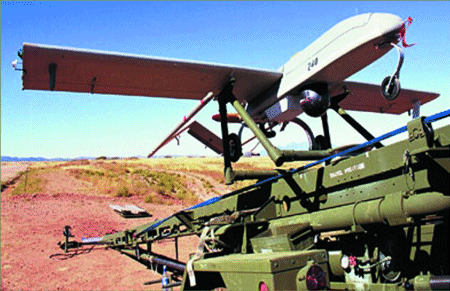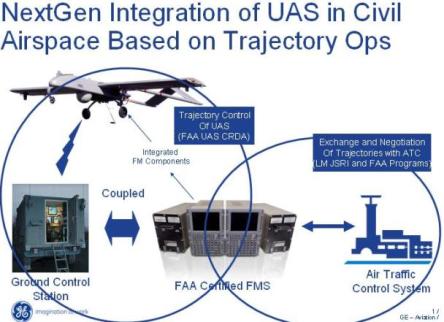GE Aviation is participating in a series of unmanned flight tests with the FAA that the company says could eventually yield reduced-crew options for cargo airlines.
First flights in a cooperative research and development agreement (CRDA) between GE and the FAA began in early December.
During those operations performed with an AAI Shadow 200 unmanned aircraft system (UAS), GE demonstrated position and time, or 4D trajectory control concepts, with its FAA-certified flight management system (FMS) hardware onboard.
 |
|---|
AAI Shadow UAV on mobile launcher (credit: AAI) |
Earlier, GE and AAI simulated 4D flight operations using the FMS at AAI's headquarters in Maryland.
During two flights, on 3 and 4 December, GE, AAI, the FAA and the US Army demonstrated the concepts in the air at the Army's Redstone Arsenal airfield in Alabama.
The AAI Shadow, which includes a ground station, has accumulated more than 460,000 flight hours with the Army, Army National Guard and Marine Corps.
The primary intent of the project is to demonstrate the applicability of the technology and to develop a plan to integrate a 4D FMS-equipped UAS in the national airspace system (NAS), says Craig Hoover, director of advanced marketing and technology at GE Aviation.
Hoover says that starting with an FAA-certified FMS helps the effort given the ubiquity of the systems in the airline and business aviation sectors.
During the test flights, Shadow pilots performed lateral path guidance to airways, flew direct to waypoints and issued airspeed and altitude commands during climb, cruise and descent. "The precision of navigation in manoeuvres was much better than can be done by pilots in the cockpit," says Hoover.
Hoover says the technology, which will eventually allow air traffic controllers to perform a real-time trajectory negotiation with an UAS, could also have far reaching consequences for manned aviation.
"The way an FMS is operated on a commercial aircraft is that air traffic control gives information to the pilot, which he finger codes into the FMS," says Hoover. "Once we develop the ability for FMS to control an aircraft without the pilot in the aircraft, and if it [the FMS] also has the ability to negotiate trajectory with the en route ground stations, you could think about having a single pilot in cargo aircraft."
GE has been working with Lockheed Martin since 2008 under a 50/50 cost-share programme to investigate that type of trajectory management between FMS-equipped aircraft and Lockheed-built air traffic control systems. Lockheed is under contract with the FAA to modernise the agency's air traffic control infrastructure under the en route automation modernization (ERAM) programme.
For 2010, GE under the CRDA will begin studying an optimal architecture for UAS, says Hoover. "For manned aircraft, the whole system on the aircraft. For unmanned, there may be certain elements that need to be put on the aircraft while others are on the ground," he says.
In addition, the company will also work with the FAA in 2010 to simulate the 4D FMS system in the agency's NAS simulator.
Hoover says there will also likely be a "significant" FAA-sponsored live unmanned aircraft demonstration in the fourth quarter of 2010 that could include FMS operations.
 |
|---|
Elements of GE CRDA with FAA for Shadow 4d FMS tests |
Source: Air Transport Intelligence news













